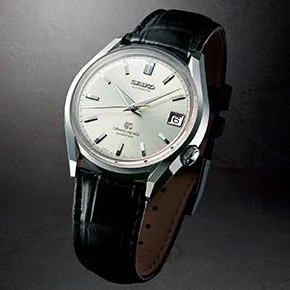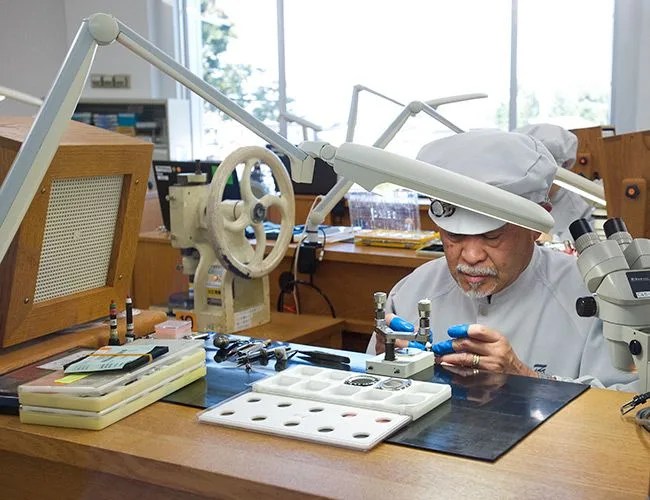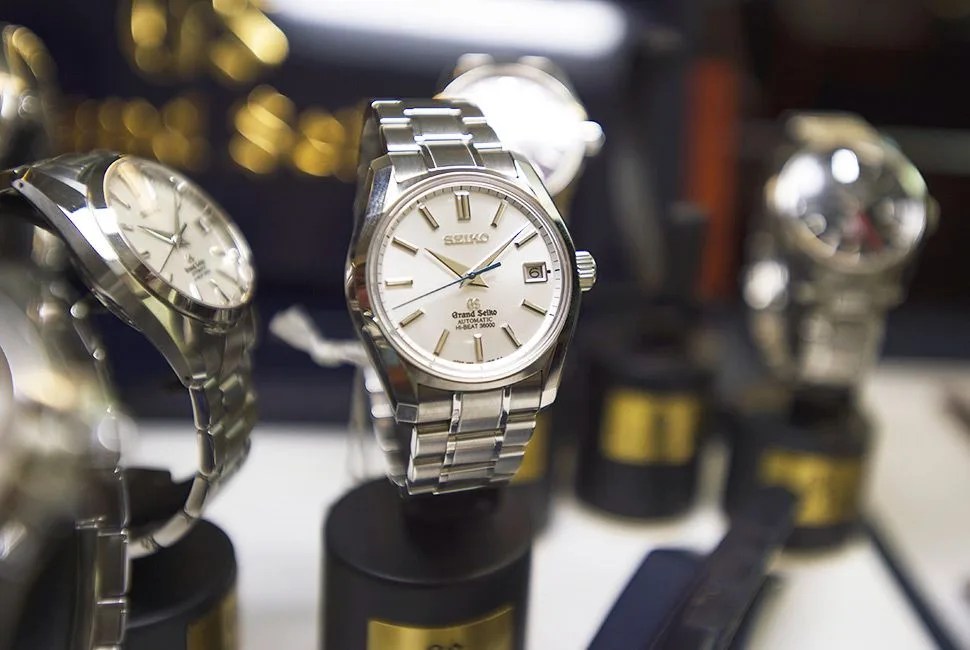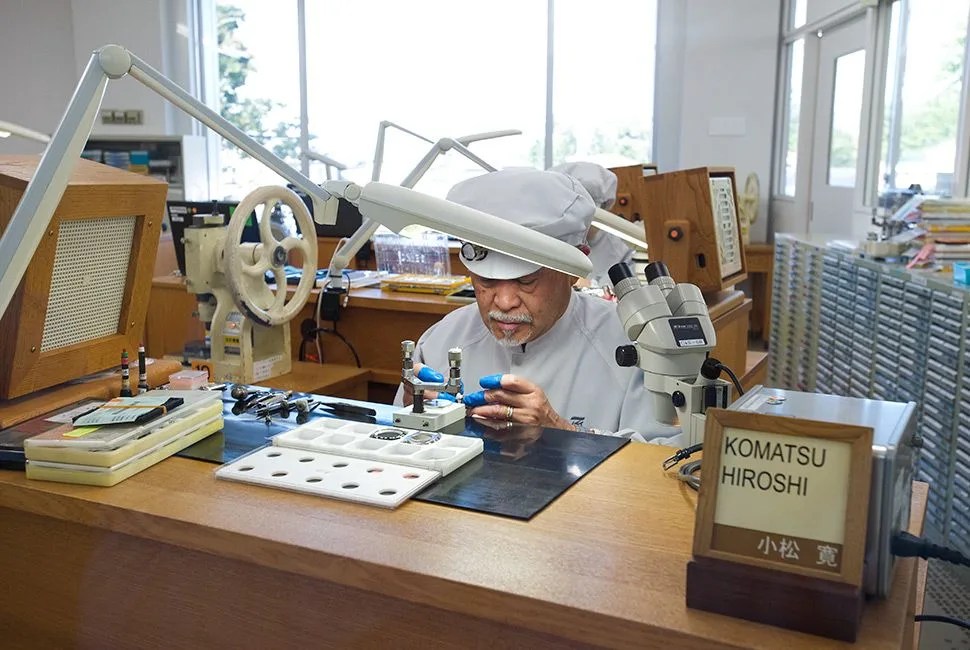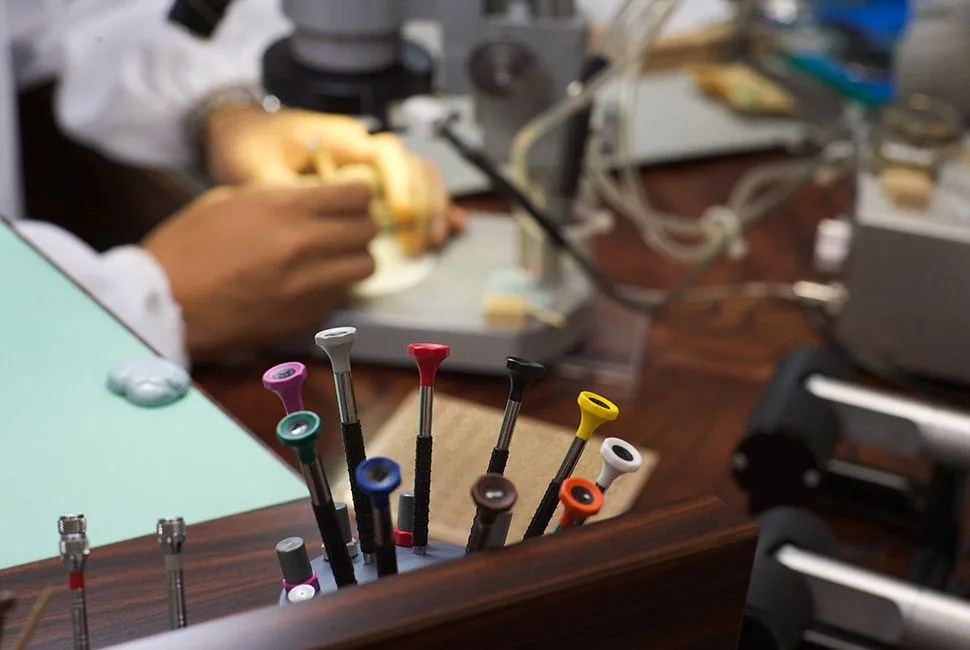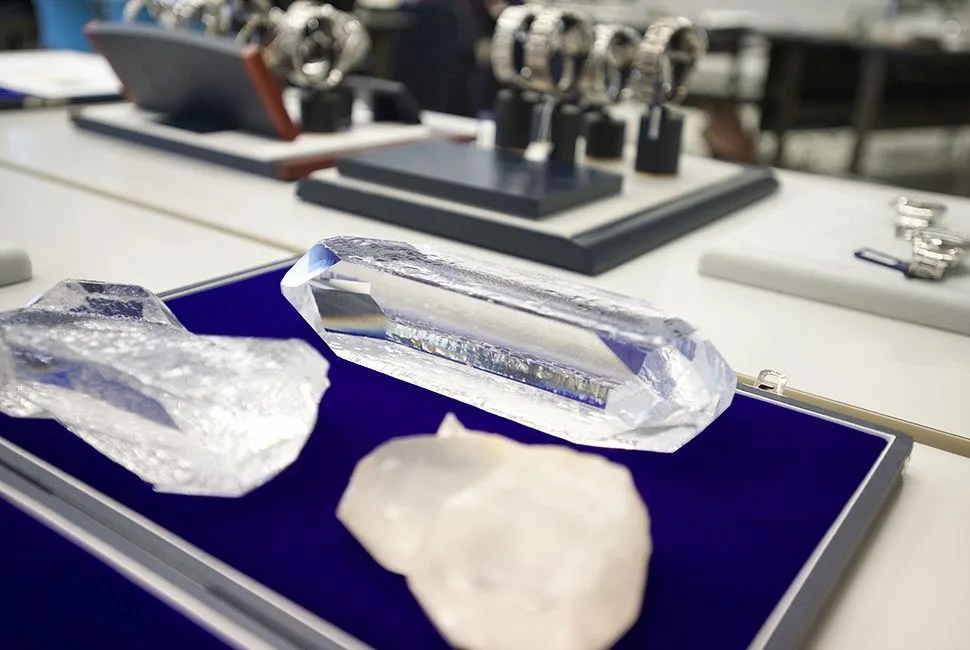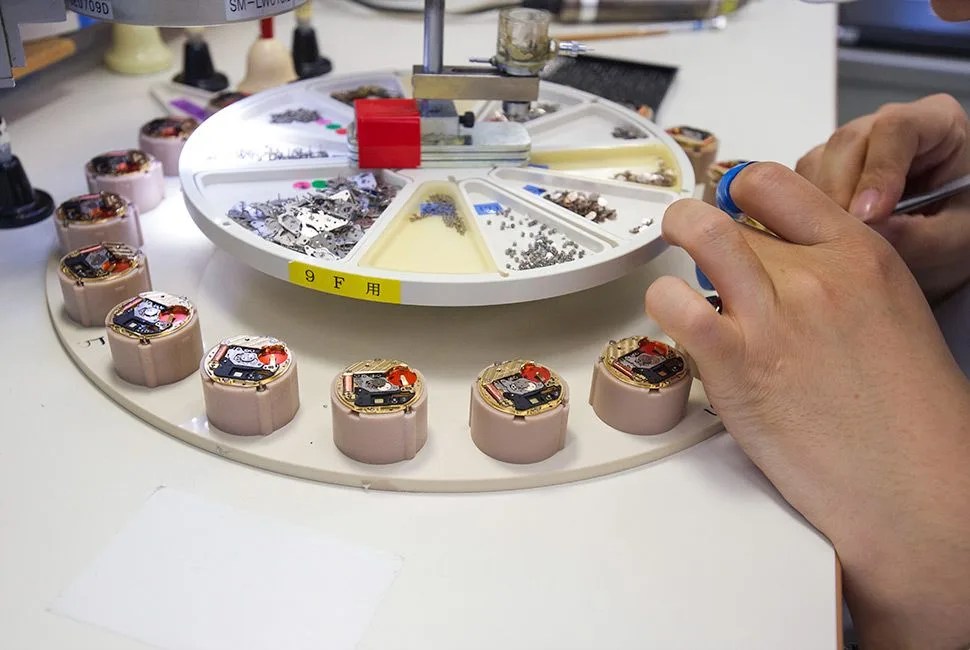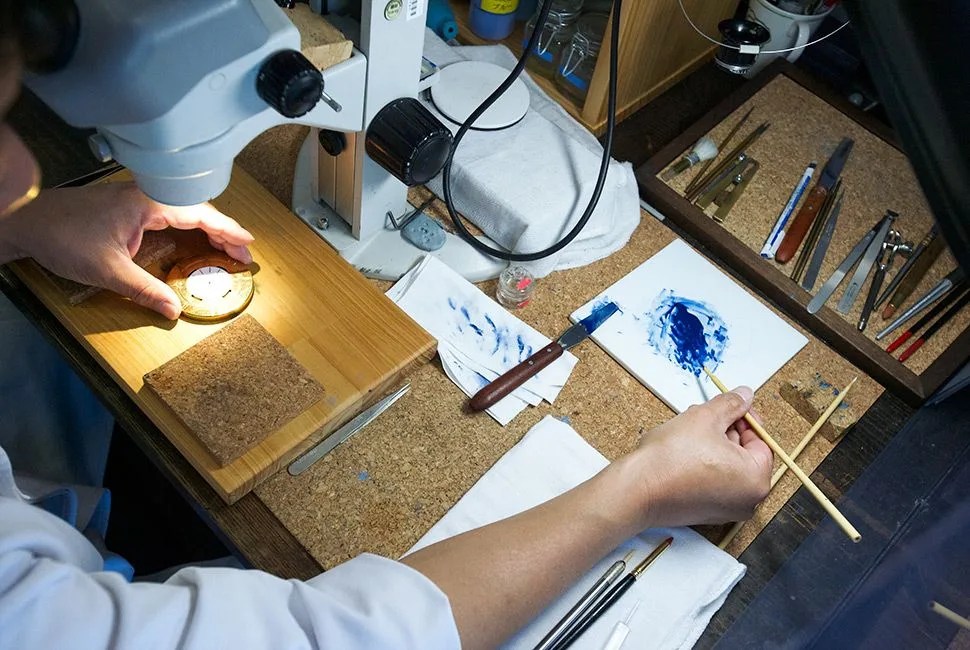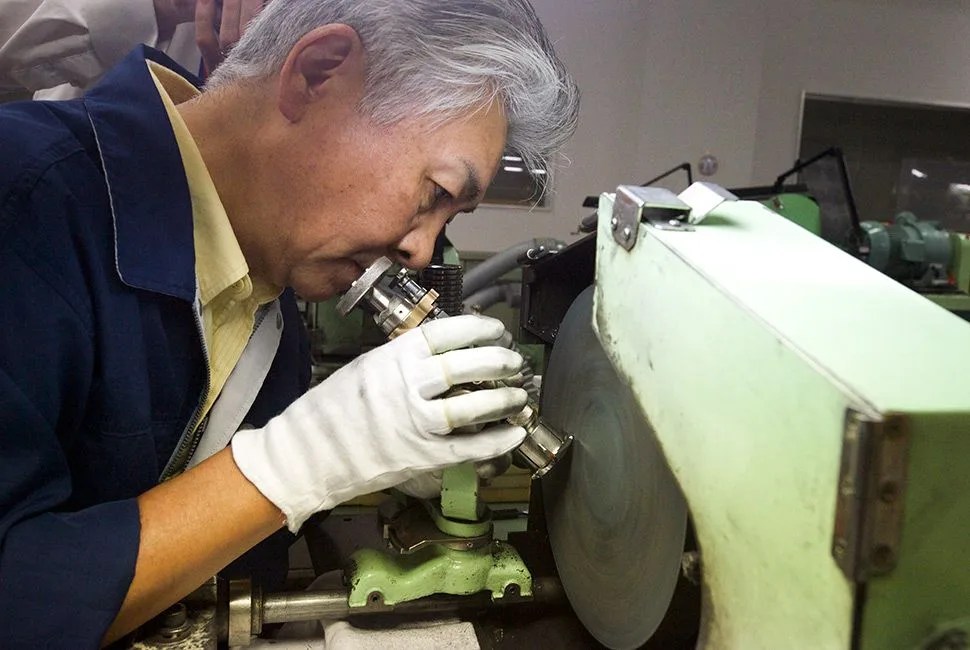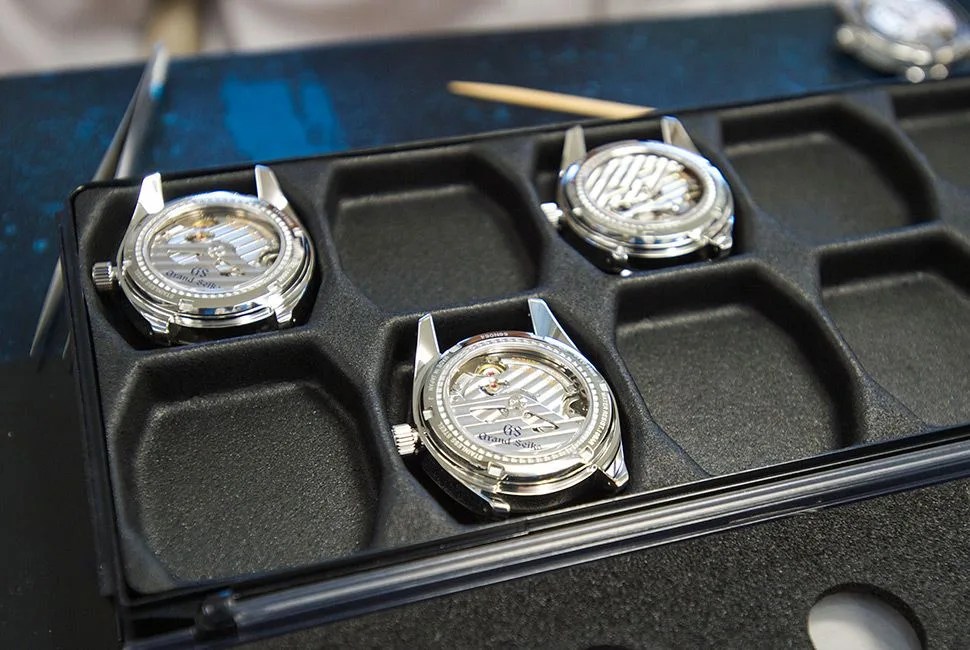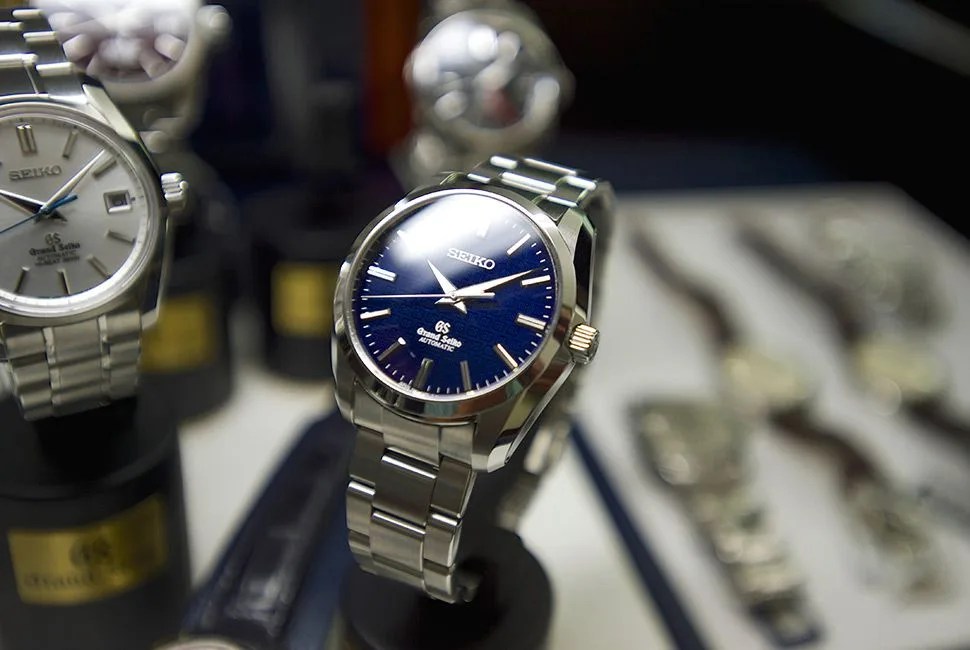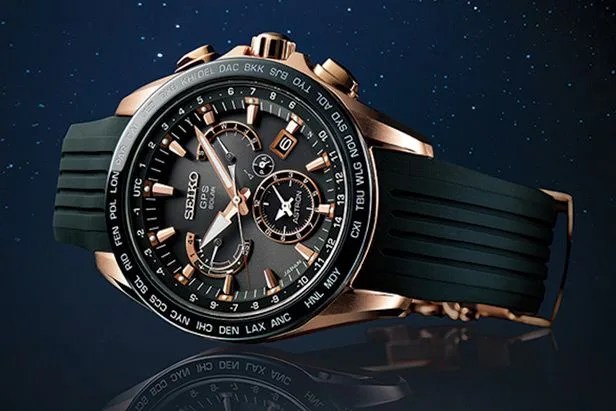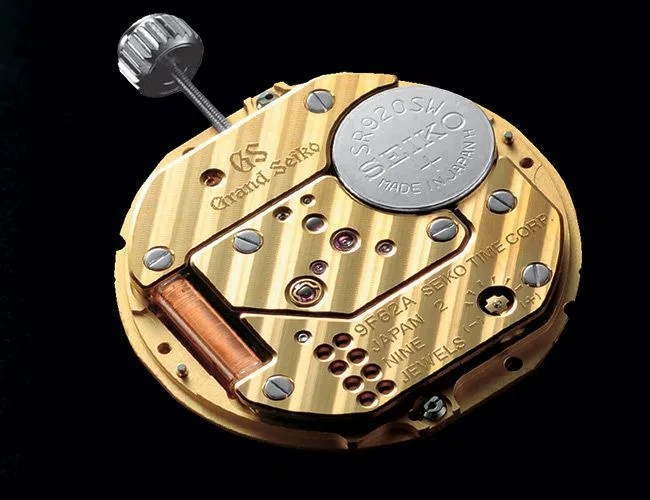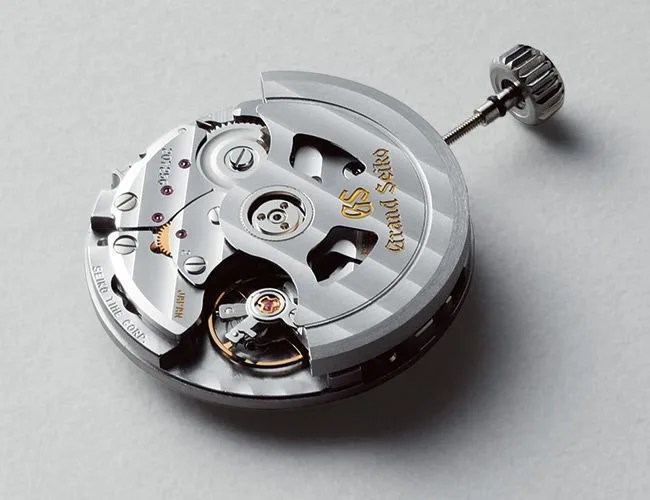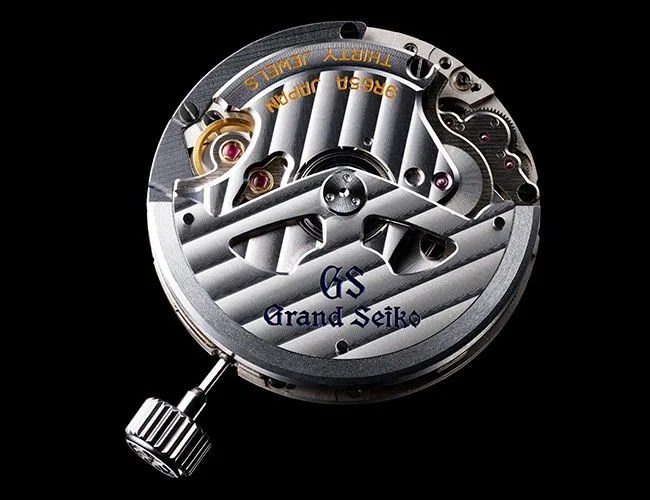10 photos
In a small, sunlit room outside the wooded northern hamlet of Morioka, Japan, a dozen or so watchmakers wearing white coats and caps sit in monastic silence at custom-sized Iwayado wooden desks. Each one is studiously performing a task — assembling, adjusting, polishing — that will ultimately result in a wristwatch that has few peers in the hallowed realm of horology. This is the Shizuku-ishi workshop of Seiko Instruments, where all Grand Seiko and Prospex mechanical watches originate. A glimpse into this space is a pulling back of the curtain on one of the most respected watchmaking traditions anywhere in the world, one that is rarely seen.
Just down the hall and around a corner is another room where watches are made. But this room is considerablty larger and louder. As far back as the eye can see, an army of custom machines works at lightning speed, punching out printed circuit boards and spooling copper wire onto a coil at 10,000 revolutions per minute. It is an automated assembly line that spits out over 10 million quartz movements per day, all of which are sold to third parties. This dizzying display is no less impressive than the Shizuku-ishi, workshop but the juxtaposition is jarring. However, it is also what makes Seiko so unique. There is pride in all aspects of their work, from the hand-polished case of a Grand Seiko to the GPS receiver in the Astron.
There is a tangible sense that Seiko marches to the beat of its own drum, seemingly uncaring and oblivious to the trends in the rest of the watch world in a single-minded pursuit of its own lofty goals.
“Seiko” means “precision” in Japanese, and since the company’s founding in 1882, living up to that name has been nothing less than an obsession. That has meant disregarding stubborn notions of what watchmaking should be and creating a company that has produced some of the most revolutionary milestones in watchmaking, like the first self-winding mechanical chronograph, the Spring Drive movement which converts mechanical energy into an electrical pulse and, most famously, the quartz watch movement. But with Seiko, these innovations are done with a workmanlike humility uncommon in an era of hyperbolic press releases. There is a tangible sense that Seiko marches to the beat of its own drum, seemingly uncaring and oblivious to the trends in the rest of the watch world in a single-minded pursuit of its own lofty goals.
A Study in Minimalism
